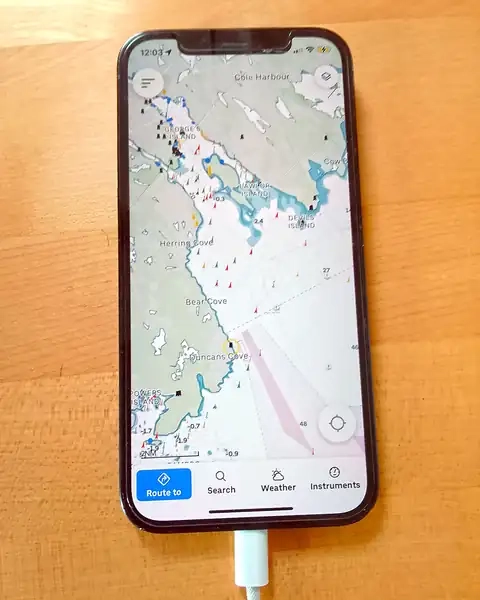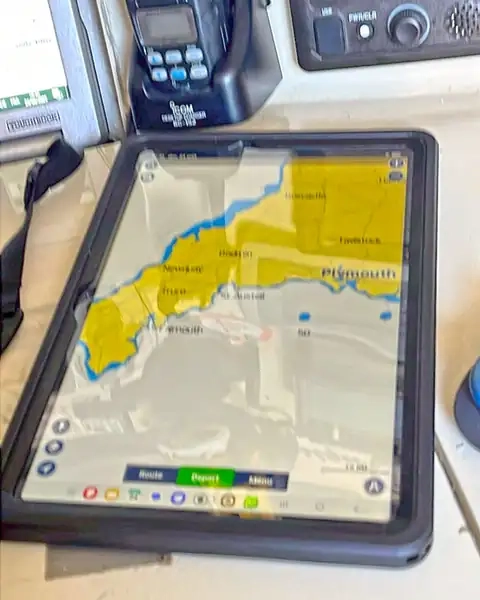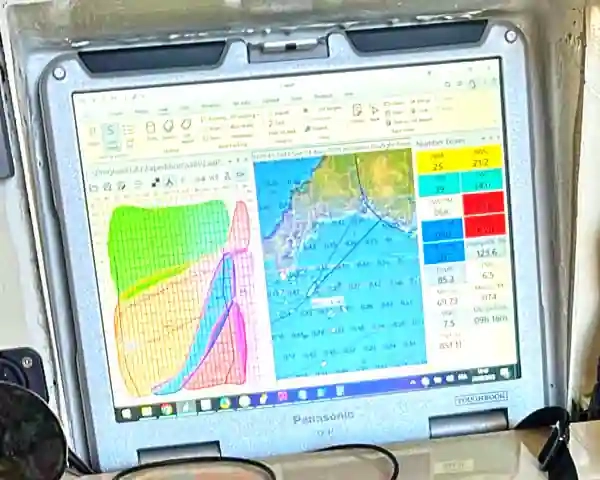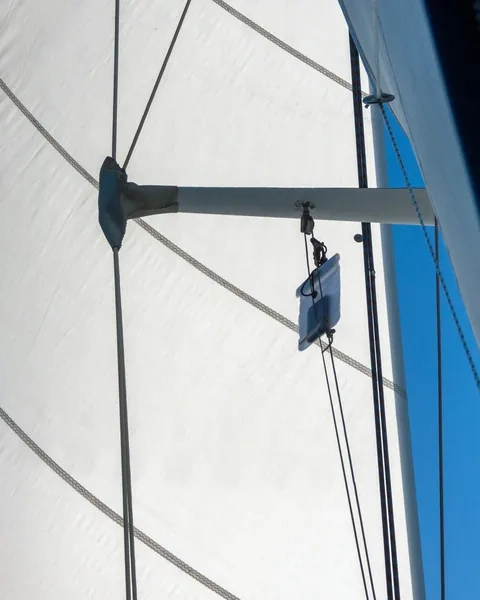Protecting Your Digital Gear Onboard: Tips for Cruisers and Boaters
Modern boating has evolved far beyond paper charts and compasses. Today, sailors and powerboaters rely on digital devices like laptops, tablets, smartphones, cameras, and even drones to navigate, document their adventures, and stay connected. Unlike specialized marine electronics, though, these consumer-grade devices aren’t designed to withstand the harsh conditions of life at sea. Saltwater corrosion, temperature fluctuations, vibrations, and unstable power supplies can quickly turn expensive gear into useless paperweights if not properly protected. Understanding how to care for your digital equipment onboard isn’t just about preserving your investment. It’s about ensuring reliability when you need it most.

The Unique Challenges of a Marine Environment
We’ve already discussed on this blog how harsh the marine environment can be on boats. Be it sails, engines, wood varnish and even deck hardware, everything takes a toll on a boat, even more so in tropical climates. We can personally attest how the saltwater environment is even more hostile to electronics. Over the course of a year and a half, we have lost three laptops, none of which ever took a spill or a splash.
Life onboard really presents a set of challenges that most digital devices simply aren’t built to handle. And salt is one of the biggest threats. Even a small amount of airborne salt spray can corrode metal contacts, degrade circuits, and eventually render a device inoperable.
Temperature extremes pose another risk. Direct sunlight can cause devices to overheat, leading to battery damage or even screen delamination. On the other hand, cold nights can create condensation inside casings, shorting out internal components. Vibrations from the engine or rough seas can loosen connections, damage hard drives, or crack screens. Meanwhile, the electrical systems on boats often deliver inconsistent voltage, which can fry sensitive electronics if not properly managed. Even UV exposure, often overlooked, can degrade plastics, fade screens, and weaken adhesives over time. These factors combine to create an environment where a device that works perfectly on land can fail unexpectedly at sea.
Physical Protection: Cases, Mounts, and Smart Storage
The first line of defense for your digital devices is physical protection. Waterproof cases or pouches with an IP67 rating (or higher) are essential for tablets, laptops, and cameras, as they provide a seal against both dust and water immersion. For drones and other sensitive equipment, hard-shell cases with custom foam inserts offer additional shock absorption, protecting against drops and vibrations. When mounting devices, avoid suction cups, which can fail in rough conditions. Instead, opt for vibration-dampening mounts or brackets with locking mechanisms to keep devices secure. Bungee cords can also add an extra layer of security, preventing gear from sliding or falling during sudden movements.
Storage is equally important. Devices which can’t be taken home should be kept in padded, ventilated compartments rather than airtight spaces where condensation can build up. A small silica gel pack placed inside storage bags can absorb excess moisture, further reducing the risk of corrosion. Many cruisers have found that laptops stored in sealed dry bags without ventilation develop condensation inside, leading to internal rust. By contrast, those who store their devices in well-ventilated areas with silica gel packs can significantly extend the lifespan of their equipment.

Combating Salt and Humidity
Salt and humidity are inevitable onboard, but their effects can be mitigated with regular maintenance. After exposure to salt spray, devices should be wiped down with a microfiber cloth dampened with fresh water. For stubborn salt deposits, a 50/50 mix of distilled water and white vinegar can be used. Most alcohol-based cleaners should be avoided, as they can damage protective coatings. It’s also important to avoid using compressed air, which can force moisture deeper into ports and crevices.
For long-term storage, applying a thin layer of dielectric grease to metal contacts, such as charging ports and battery terminals, can prevent corrosion. Cameras and drones, which are often used in exposed conditions, should be wiped with fresh water after saltwater exposure and allowed to dry completely before being stored. We speak from experience: some of our photo gear began sticking from salt buildup, and lens fungus even developed inside.
Managing Temperature and Sun Exposure
Temperature control is another critical aspect of digital device care. Direct sunlight can cause devices to overheat in minutes, particularly if they’re mounted on dashboards or left in open areas. Reflective sunshades can help mitigate this risk. When bringing a cold device into a warm cabin, it’s wise to let it acclimate in a ziplock bag with silica gel to prevent internal condensation. This simple step can prevent moisture from damaging sensitive components.
For devices that must remain onboard, such as entertainment systems or navigation tablets, reflective covers or insulated coolers can provide additional protection. Even something as simple as storing a tablet in the shade rather than on a sunlit surface can make a significant difference in its longevity.

Power Safety: Surges, Batteries, and Charging Best Practices
Power stability is another common issue on boats, where voltage fluctuations can damage electronics. Using a marine-grade surge protector (not a standard household model) can safeguard sensitive devices from unexpected spikes or drops in power. It’s also a good practice to unplug devices during engine starts, as cranking the engine can cause voltage surges that may fry circuits.
Battery care is another often-overlooked aspect of digital device maintenance. Batteries should be removed from devices during long-term storage, such as during winter layup, and stored in a cool, dry place at around 40-60% charge. Spare batteries, in particular, should be checked periodically and recharged to maintain their health. Boaters who stored their drone batteries fully charged over the winter found they had lost much of their capacity by spring. Cycling batteries every few months can prevent this kind of degradation.
Charging devices while underway can also be risky if the boat’s electrical system is unstable. Whenever possible, charge devices while connected to shore power or use a voltage regulator to ensure a steady supply. Avoid charging multiple high-draw devices simultaneously, as this can overload circuits and increase the risk of damage.
Data and Software: Backups and Offline Solutions
Beyond physical protection, safeguarding your data is equally important. Regular backups to both cloud storage and a waterproof external SSD ensure that critical files, such as navigation logs or photos, aren’t lost if a device fails. Friends who relied solely on their laptop for navigation learned this the hard way when their hard drive failed mid-voyage, taking years of waypoints and pictures with it. Had they maintained a backup, the loss would have been avoidable. We kept duplicate of all our files on external hard drives, which enabled us to be back in business easily when laptops failed. Finally, note that storing your boat’s important documents on Ready4Sea is not only practical but more secure.
Software also plays a role in device longevity. Disabling auto-updates while offshore can prevent unexpected data usage or battery drain, while offline nautical charts reduce reliance on cellular signal. Keeping operating systems and apps up to date ensures optimal performance and security, of course, but updates should be scheduled for times when a stable internet connection is available.
Ruggedized Devices: Built to Withstand the Marine Environment
Ruggedized devices often provide a combination of enhanced durability, environmental protection, corrosion resistance, and usability. They may feature :
- Tough, impact-resistant materials such as polycarbonate or magnesium alloy, which can absorb shocks and resist cracks.
- Internal components mounted on shock-absorbing materials to prevent damage from constant vibrations or sudden impacts.
- IP65, IP67, or IP68 ratings, meaning they are sealed against water and dust ingress. Their ports and connectors prevent saltwater and moisture from penetrating and causing corrosion.
- Components treated with anti-corrosive coatings such as epoxy to protect against salt spray and humidity.
- Extreme temperature tolerances, being designed to operate in freezing cold or scorching heat, without risking overheating or condensation damage.
- Displays designed to be readable in direct sunlight, often with high-brightness or anti-glare coatings.
- Built-in protection against power surges.

Alternatives to Rugged Tech: Protecting Consumer Electronics
While they are designed to withstand harsh conditions, ruggedized devices are more expensive. And they aren’t always necessary for every boater. Standard consumer devices, such as laptops and smartphones, can work well onboard if given extra protection, such as waterproof cases and careful handling. For example, a standard tablet in a waterproof case can serve as a reliable backup chartplotter, though it shouldn’t be the sole navigation tool. The key is redundancy. Carrying a backup device, such as a spare tablet or smartphone, ensures that you’re never left without critical functionality.
Another approach is to invest in higher quality equipment. Remember how three of our laptops failed in hardly more than a year? The pricier model we bought next from a certain fruity brand then lasted us for years. What a change!
Finally, paper charts can also serve as a backup to digital navigation systems, providing an additional layer of security in case of device failure. Indeed, however rugged the equipment may be, if lightning strikes, chances are most electronics will be fried, either instantly or very soon.

A Simple Maintenance Routine for Long-Term Reliability
Maintaining digital devices onboard doesn’t have to be complicated. A monthly checklist can help keep everything in working order:
- Wipe down all devices with a fresh water-dampened cloth to remove salt and dust.
- Inspect cables and ports for signs of corrosion or wear.
- Test backup systems, including cloud storage and external drives.
- Replace silica gel packs if they’ve absorbed too much moisture.
- Cycle batteries by charging and discharging them to maintain their health.
By integrating these steps into your regular boat maintenance routine, you can significantly extend the life of your digital gear. Tools like the Ready4Sea app can help by sending reminders for these tasks, ensuring nothing is overlooked.
Final Thoughts: Small Efforts, Big Rewards
Protecting your digital devices onboard requires a combination of prevention, maintenance, and quick action when things go wrong. By storing devices properly, cleaning them regularly, and protecting them from power issues, you can avoid the frustration and cost of mid-voyage failures. Whether you’re relying on a tablet for navigation, a camera to capture memories, a sound system for your entertainment, or a drone for aerial shots, a little care goes a long way in keeping your gear functional and reliable. After all, the goal isn’t just to preserve your devices. It’s to ensure they’re ready when you need them most, so you can focus on enjoying your time on the water.
